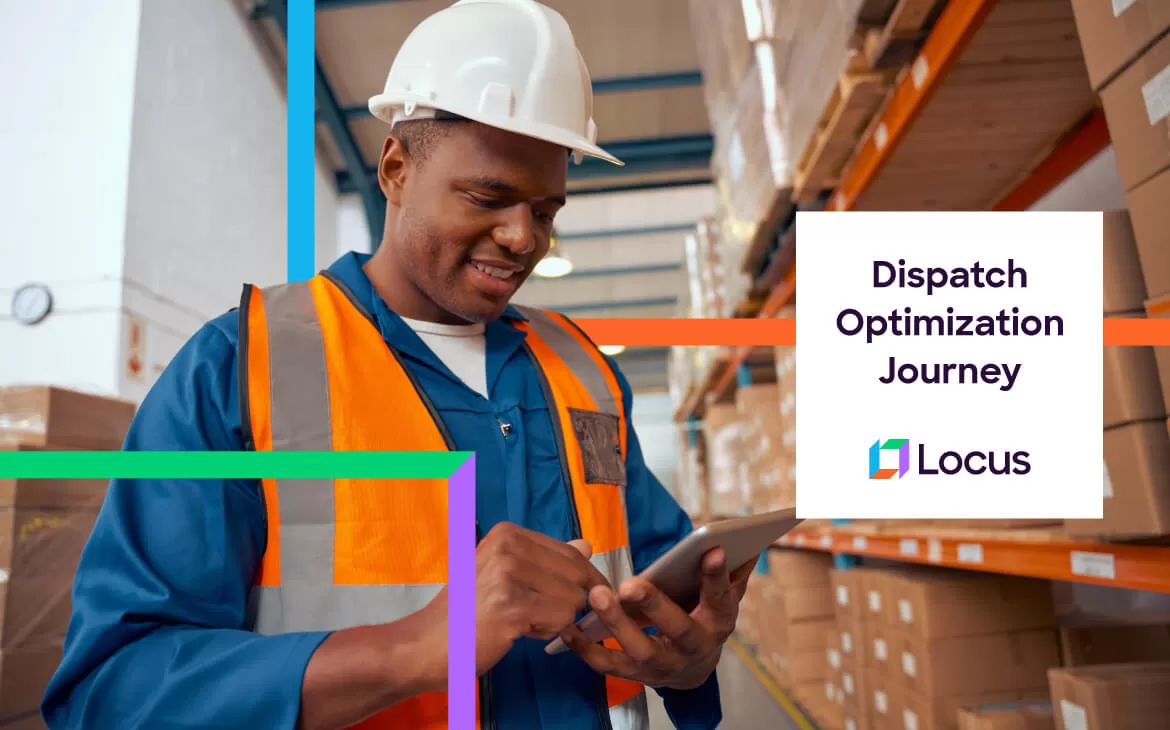Blog, General, Last Mile Delivery Optimization, Route Optimization
Why automation is the next step in your dispatch optimization journey
Feb 8, 2022
4 mins read

John is a floor supervisor at a high-growth e-commerce company. One of his key tasks is to take stock of the various shipments to be delivered and assign them to delivery executives. As a floor supervisor, John has intimate knowledge of the strengths of each delivery executive and the vehicles that they drive. With these insights, and on the basis of delivery priority for each parcel, he painstakingly chalks out delivery routes.
With a pen and paper in hand and a bunch of spreadsheets at his side, it takes many hours on a good day to complete the task. The rest of it is then spent in assigning new orders, handling returns, and calling delivery executives to track their progress and fix any problems. This is more of an art than a science for John as he needs to trust his instincts to selectively contact his delivery executives. Otherwise, he risks slowing them down with every follow-up, and potential delays.
The change of on-ground realities
With the onset of the coronavirus pandemic, consumers changed their shopping habits almost overnight. And as more and more people began to shop online, they quickly got used to the convenience that comes with it. John had his work cut out for himself as he had to suddenly handle greater complexity while maintaining the same standards.
Consumers also understood that each e-commerce provider has several competitors. And that if they were not happy with their services or prices, they could always jump ship to another. Take the example of last year’s holiday season. According to a McKinsey survey, close to 70 percent of consumers switched brands and retailers if they found a product to be out of stock.
On the other side of the fence, brands, retailers, and e-commerce companies realized that they would have to work a lot harder to keep customers happy and retain them. This meant keeping prices low, and enhancing the customer experience by minimizing the rate of late deliveries and returns.
Why automation is the way forward
Thus, the real challenge is: How can people like John improve their service level agreements (SLAs) on deliveries while keeping costs in check? Fortunately, technology has managed to catch up with this massive surge in demand.
New-age dispatch software harnesses the power of artificial intelligence (AI) and machine learning (ML) to automate several routine tasks in dispatch operations. With such software on board, all that John has to do is input the characteristics of each delivery executive and vehicle the first time around.
For each batch of incoming orders, dispatch software can factor in real-life constraints such as traffic, distances, the timing and priority of the delivery, among others, to come up optimal dispatch routes. They are created to realistically get the highest possible deliveries with minimal fuel usage from each delivery executive. Powered by AI/ML, dispatch software can also update routes in real-time to incorporate additional deliveries or changes in delivery schedules throughout the day.
Beating relegation through automation with Locus’ DispatchIQ
Locus’ route optimization software is an ideal platform for dispatch management in the last mile. Its dynamic algorithms ensure that orders are scheduled optimally through vehicles and routes that take into account 280+ constraints. These include SLAs, business rules, vehicle types, driver skills and characteristics, and cost constraints, among others. The routes can be created and customized across either captive, controlled, or outsourced fleets, and can be updated in real-time to incorporate priority deliveries.
Locus’ advanced geocoding capabilities ensure that delivery addresses are accurately located on a map, despite any fuzziness or ambiguity. This is crucial in improving first attempt delivery rates (FADR), SLAs, and reducing costs, saving time, and improving overall productivity. The algorithms continuously learn and optimize routing and vehicle selection by analyzing data across three levels – riders, customers and, time of the day.
The solution also provides a control tower dashboard that monitors all ongoing deliveries in real-time. Supervisors can keep track of deliveries and address SLA breaches, route divergences, and delays through automated notifications. Locus’ advanced analytics capabilities help logistics managers to come up with reports featuring key on-ground data and performance metrics featuring engaging visual representations. All of these can help in identifying performance gaps or with course correction if needed.
To know more about how DispatchIQ can help unleash the power of automation for your business, click here to schedule a demo with us today!
Related Tags:

3PL
Leave it To The Experts: How 3PL Providers are Giving the Winning Edge to Home Services Companies
A large number of businesses eyeing a slice of the pie makes the market quite competitive. Know how 3PL companies are helping home service businesses provide timely and quality services.
Read more
Blog
How Implementing a Logistics Dispatch Software Can Improve Your Last-Mile Efficiencies
Find out how the dispatch software improves last-mile efficiency for businesses as inefficiencies and complexities multiply in logistics operations. Read more!
Read moreMOST POPULAR
EDITOR’S PICKS
SUBSCRIBE TO OUR NEWSLETTER
Stay up to date with the latest marketing, sales, and service tips and news


Why automation is the next step in your dispatch optimization journey